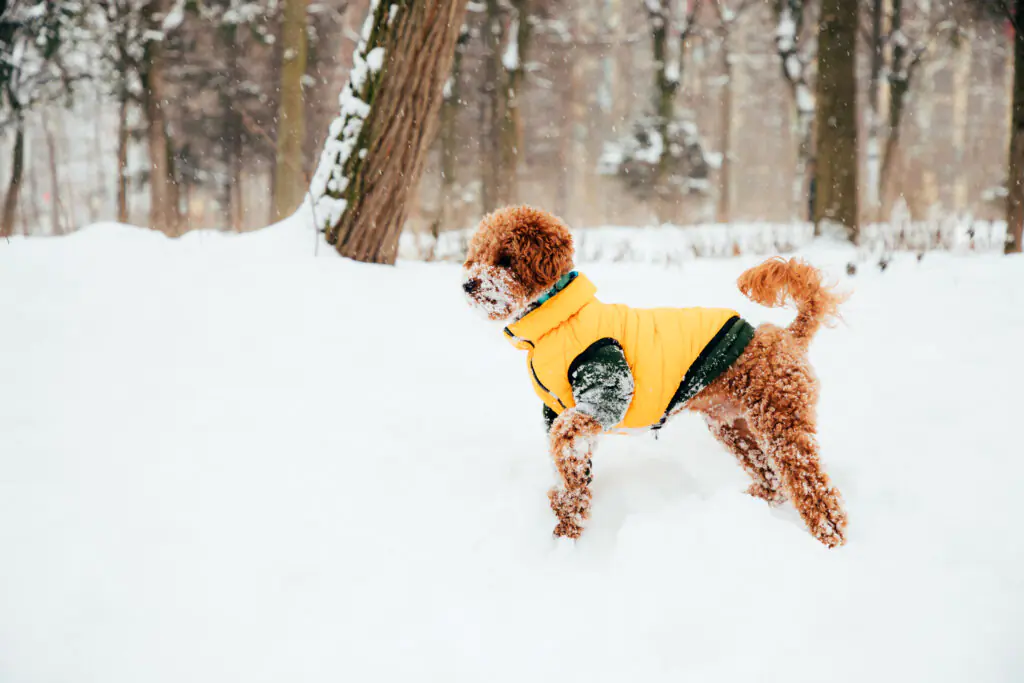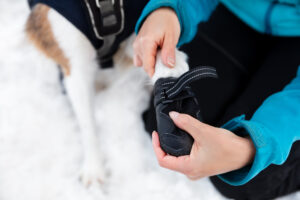
As the temperature drops and the days grow shorter, our furry friends need extra care to stay safe, warm, and happy. Winter can be magical, with the odd snow shower and cosy evenings by the fire, but it also brings unique challenges for pet owners.
Here’s how to ensure your dog thrives during the chilly months.
Bundle Up for Walks
Not all dogs are built for the cold. Breeds with short coats or little body fat, like Greyhounds or Chihuahuas, are more susceptible to the cold. Invest in a well-fitted dog sweater or coat to keep them warm and dog happy. Even for breeds with thick coats, long periods in freezing temperatures can still be harmful.
Top Tip: Look for dog booties to protect their paws from ice, salt, and chemicals used to de-ice roads. If your pup isn’t a fan of booties, paw balms can provide a protective barrier.
Watch for Signs of Hypothermia
Dogs can suffer from hypothermia and frostbite just like humans. Symptoms of hypothermia include shivering, lethargy, and cold ears or paws. Frostbite often affects the tail, ears, and paw pads. If you suspect either condition, consult your veterinarian immediately.
Maintain Regular Exercise
Cold weather can tempt us to skip walks and playtime, but regular exercise is crucial for your dog’s physical and mental health. If outdoor activities are limited, engage your pup with indoor games like hide-and-seek or fetch if you have space.
Top Tip: Consider signing up for an indoor agility or training class to keep your dog happy, active and social.
Provide a Cosy Indoor Space
Ensure your dog has a warm and comfortable spot to rest. Their bed should be placed away from drafts, cold floors, and heating vents. Consider adding extra blankets or a heated pet mat for extra cosy comfort.
Adjust Their Diet If Necessary
Some dogs may burn more calories in the winter as they try to stay warm, especially if they’re active outdoors. Talk to your vet about whether you should adjust your dog’s food intake. Always ensure they have access to fresh, unfrozen water.
Protect Against Winter Hazards
Antifreeze: This common winter chemical is highly toxic to dogs. Clean up any spills immediately and store antifreeze containers securely.
Salt and Ice Melt: These can irritate your dog’s paws and be harmful if ingested. Rinse your dog’s paws with warm water after walks to remove any residue.
Frozen Bodies of Water: Avoid walking on frozen lakes or ponds. Thin ice can break, posing a serious danger to both you and your dog.
Keep Up With Grooming
Regular grooming is essential even in winter. A clean, well-brushed coat insulates better. Avoid shaving your dog’s coat too short, and keep the fur around their paw pads trimmed to prevent ice build up.
Stay Visible
Shorter daylight hours mean more walks in the dark. Equip your dog with reflective gear, like collars, leashes, or vests, and consider a light-up collar for added visibility.
Monitor Indoor Heating
While keeping your home warm is important, be cautious with space heaters and fireplaces. Never leave your dog unattended near an open flame or hot surface.
Schedule a Winter Check-Up
Winter is an excellent time for a vet visit to ensure your dog is in tip-top shape. Discuss any seasonal concerns, like arthritis, which can worsen in colder weather.
Winter care for dogs is about more than just keeping them warm—it’s about creating an environment where they can thrive despite the chilly weather. With a little extra attention and preparation, your pup can enjoy the season as much as you do. So grab your dog’s coat, pop a few of their favourite Laughing Dog treats in your pocket (why not try Fish n Tricks) head outside for a brisk walk, and make some snowy memories together—then snuggle up for a well-deserved nap by the fire.




